
May 19, 2010
What a Mothman month these last four weeks have been, with more side events than usual pointing to the winged weirdie of Point Pleasant.

Let’s say it all started on April 24th, with the broadcast of Mothman on the SyFy channel. I said there might be some rumblings of the “Mothman Death Curse.”
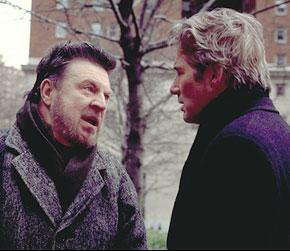
The 2010 movie seemed to stir people up, and old material about Mothman was posted online, about the 2002’s movie’s name game (“Leek” = “Keel”).

Then Mothman illustrator Frank Frazetta, 82, suffered a stroke on Sunday, May 9th, and died on Monday afternoon, May 10th, 2010, in Ft. Myers, Florida.
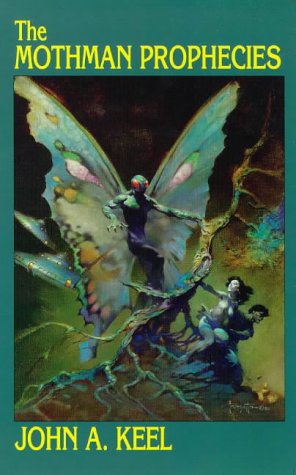
Frazetta’s Mothman book cover art had directly influenced the sculpture built in Point Pleasant, West Virginia, in honor of the Mothman lore, near the present-day Mothman museum in the downtown area.
On May 12th, I posted an old giant owl story here.
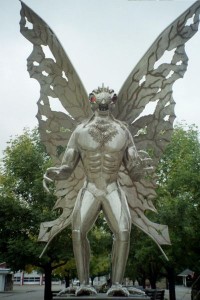
This was followed on May 14th, by blogger Regan Lee noting that a new ABC television series, “Happy Town” broadcast a new episode with a “carnival” (the Thaw Festival) being haunted by a Mothman-like figure (supposedly a giant hawk).
Lee wrote in her “Mothman Flutterings,” that “Last night’s episode [May 13th] had a Mothman like moment; a large bird, following characters around, seemingly the cause of a car accident, and hanging around the town’s annual carnival. Of course there’s a carnival! High up in a tree, the strange bird watches the crowd below. People disappear; strange things afoot.. the bird glides off, looking much like a Thunderbird and making an unearthly, unbirdlike cry. The bird gets a few people’s attention, and is considered a bad omen by some, a sign of things to come for others. The show didn’t make any references to Mothman but it just reminded me of Mothman in some ways.”
Now comes some explosive news from the old stomping grounds of the Mothman, the TNT area.
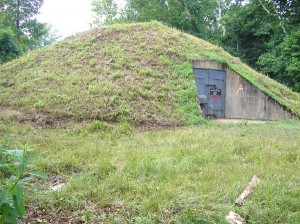
According to news station WSAZ, a powerful explosion rocked the night sky over Mason County, West Virginia, early Monday morning (1:13 a.m., May 17, 2010) in an underground bunker filled with ammunition in the old TNT site near Point Pleasant.

“It was so bright it turned night into day,” Adam Frazier said. “I didn’t hear an explosion, but I saw the light.”
He said he shot a light about a mile away from his home around 1 a.m. Monday.
“I shot it with my cell phone because I knew no one would believe me,”Frazier said.
An underground storage bunker was the source of the blast. Empty barrels and metal storage boxes were thrown everywhere, some landing as far as 100 feet away in a nearby swamp.
“The steel doors were thrown off, and the ceiling is made of 6-inch concrete that lifted up and then caved in,” Gary Sharp with the Division of Natural Resources said. “The blast was pretty extensive.”
The bunkers were built to store munitions during World War II. But now the Division of Natural Resources leases several dozen concrete bunkers in the McClintic Wildlife Management Area, also known as the old TNT site, to folks looking for unique storage.
“We haven’t had an explosion like this ever and we’ve been storing explosives for 40 years,” Sharp said.
That bunker was leased by Richard King of High Performance Ammunitions, which is based in Pittsburgh. King also lives in Point Pleasant.
King said he was storing military issued propellant or gunpowder that he bought in surplus and then broke apart and sold. He says it’s not as highly explosive as dynamite but — when heated — can build up a lot of pressure until it eventually explodes.
He said he’s not sure what caused the gunpowder to explode and is awaiting the outcome of the investigation like everyone else. King also said, at one time, he was storing as much as 100,000 pounds of gunpowder.
At the time of the explosion, however, there was only about 15,000 to 20,000 pounds.
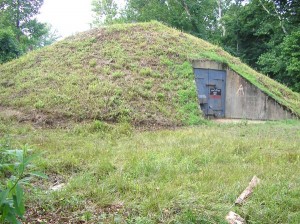
Paul Cross with the Bureau of Alcohol, Tobacco, Firearms and Explosives says a businessman was storing different types of gunpowder for resale in the bunker. Over time and with heat, Cross says gunpowder can be deteriorate and become unstable.
The Division of Natural Resources owns several concrete bunkers that were used to store explosives during World War II. DNR spokesman Hoy Murphy says the bunkers are leased out to businesses for storage.
What’s next?
About Loren Coleman
Loren Coleman is one of the world’s leading cryptozoologists, some say “the” leading living cryptozoologist. Certainly, he is acknowledged as the current living American researcher and writer who has most popularized cryptozoology in the late 20th and early 21st centuries.
Starting his fieldwork and investigations in 1960, after traveling and trekking extensively in pursuit of cryptozoological mysteries, Coleman began writing to share his experiences in 1969. An honorary member of Ivan T. Sanderson’s Society for the Investigation of the Unexplained in the 1970s, Coleman has been bestowed with similar honorary memberships of the North Idaho College Cryptozoology Club in 1983, and in subsequent years, that of the British Columbia Scientific Cryptozoology Club, CryptoSafari International, and other international organizations. He was also a Life Member and Benefactor of the International Society of Cryptozoology (now-defunct).
Loren Coleman’s daily blog, as a member of the Cryptomundo Team, served as an ongoing avenue of communication for the ever-growing body of cryptozoo news from 2005 through 2013. He returned as an infrequent contributor beginning Halloween week of 2015.
Coleman is the founder in 2003, and current director of the International Cryptozoology Museum in Portland, Maine.
Filed under Breaking News, Cryptomundo Exclusive, Cryptotourism, CryptoZoo News, Mothman, Winged Weirdies